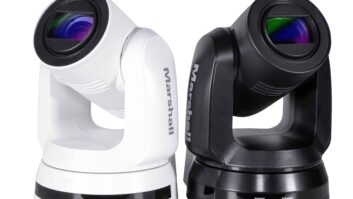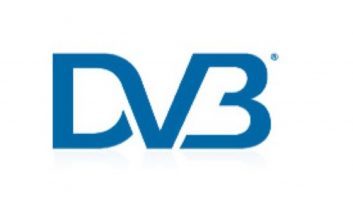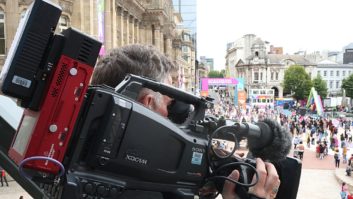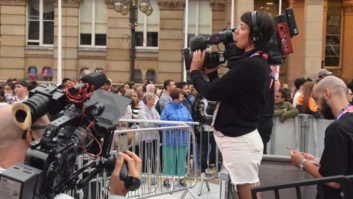As well as the action on the track and in the various stadia in Melbourne, the recent Commonwealth Games was also notable for a strong showing from DVB-H. In what the companies involved refer to as ‘a landmark showcase’, up to seven channels of live coverage via DVB-H were broadcast during the fortnight of the games.
Leading broadcast infrastructure group Broadcast Australia was responsible for the successful design, installation and commissioning of the RF transmission component of the showcase system, located in the heart of the Melbourne CBD. “In the planning phase, we used specialised computer modelling tools to design the service to cover as many venues as possible,” commented BA’s Product Development Manager, David Hilliger. “Our team was responsible for field strength measurements and performance verification. The planning work was verified through field testing, which showed good correlation between the predicted model and achieved coverage.”
The Broadcast Australia component of the DVB-H system incorporated an 800-watt transmitter plus sophisticated QPSK modulation and monitoring equipment. Broadcast Australia, Telstra and Finland’s Cardinal Information Systems worked together to deliver the DVB-H transmission stream to the inner city broadcast site using an optical fibre configuration.
Broadcast technology group Radio Frequency Systems (RFS) provided the UHF antenna system, which comprised multiple antenna panels mounted on different faces of the Collins Street building. Whereas conventional broadcast panel arrays must be mounted close together back to back for tight alignment of RF signals, Broadcast Australia achieved the required coverage using a distributed antenna system by taking advantage of the particular characteristics of OFDM modulation during system design. The antenna system delivered up to 7.5 kilowatts of effective radiated power.
To view the DVB-H mobile television, a specially equipped mobile receiver was required. The receiver, provided by DiBcom, was integrated into an eTEN Windows Mobile Smartphone that also acts as a Personal Digital Assistant (PDA). The showcase DVB-H system utilised Microsoft Windows Media Video 9 compression technology (Microsoft’s implementation of the VC-1 codec), plus a DVB-H head-end from Cardinal to encapsulate IP data and perform the time-slicing of the data stream. This equipment was located in Telstra’s facility at the Melbourne 2006 Commonwealth Games International Broadcasting Centre.
According to Clive Morton, broadcast services director at Broadcast Australia, the company’s participation in the Melbourne 2006 Games complemented the company’s one-year trial of DVB-H technology underway in Sydney. “The Melbourne system used a number of different technologies compared with the Sydney trial,” he said. “This has allowed us to build upon our foundation of DVB-H knowledge. DVB-H is still an emerging technology. It’s important to look at all the options available and explore their various capabilities.”







